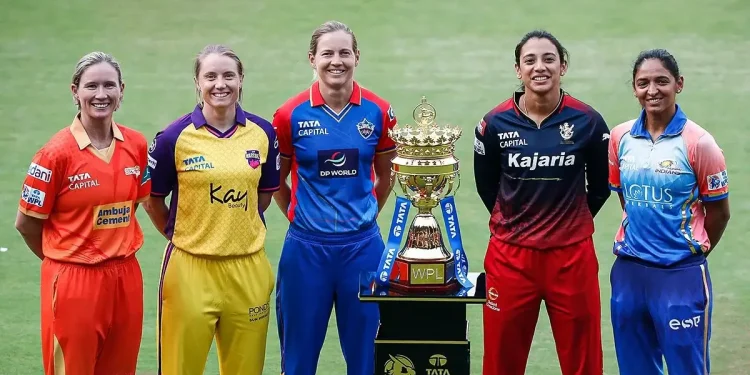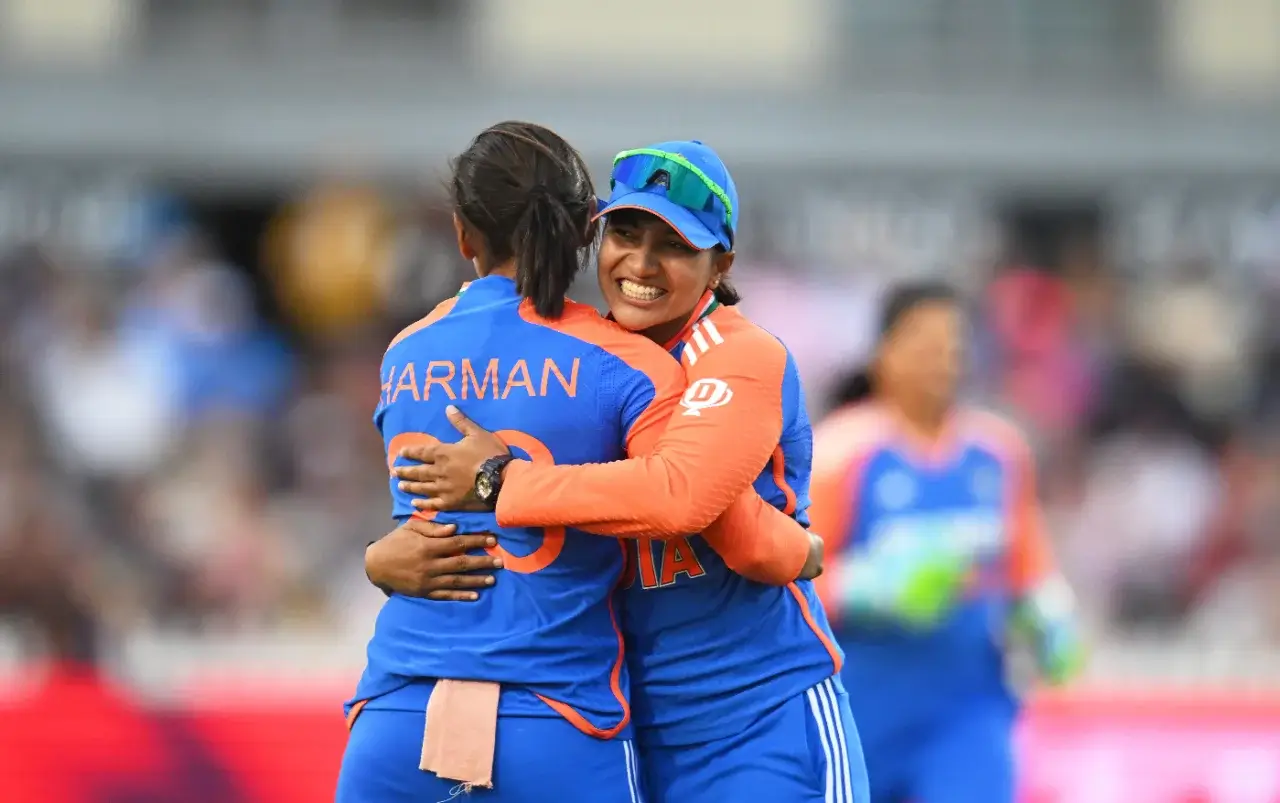The 2025 season highlighted how T20 leagues reshaped women’s cricket worldwide. Crowds that once stayed away now fill stadiums with unmatched energy. Broadcast rights, prize pools, and league contracts created professional careers overnight. Veteran players compare earlier struggles with today’s structured systems and sustainable opportunities.
Thirush Kamini recalls the 2013 Cup in India with sparse crowds. She says playing with global stars in leagues removed doubts immediately. Young players now see realistic professional pathways instead of distant dreams. Leagues replaced isolated games with daily pressure and meaningful career opportunities.
Marizanne Kapp measured this shift with scoring trends across international tournaments globally. Teams regularly cross 300 runs, while batting strike rates continue to rise. Six-hitting and century frequency reflect improved fitness and smarter tactical systems. Numbers confirm leagues and fitness investment permanently lifted global cricketing standards.
Suzie Bates credited the WPL for accelerating India’s cricket culture significantly. Danni Wyatt-Hodge noted increased recognition, sponsorships, and fan visibility for players. Megan Schutt predicted tighter contests and stronger crowds across subcontinental stadiums. This article explores pathways, finances, tactics, fandom, and assumptions shaping cricket’s next decade for England and Indian players.
Franchises Creating Professional Pathways for Global Players
T20 leagues built structured career pathways that never existed before properly. Scouts identify young talent, franchises sign contracts, and academies provide systems. Daily training under specialists exposes players to tactical adjustments and consistent feedback. This constant exposure fast-tracks learning and reduces gaps between nations rapidly.
Players share dressing rooms with international stars, learning variations and handling pressure. Coaching systems inside leagues bring mental conditioning, biomechanics, and skill workshops. Exposure to consistent match tempo accelerates tactical growth and decision-making instantly. Regular international-level competition ensures readiness for tournaments beyond domestic structures.
For young girls, stars in leagues became tangible role models instantly. Visibility created hope, and franchises invested in grassroots clinics and academies. Clear systems from local clubs to leagues now exist globally. This conveyor pathway strengthens national teams by delivering tested, professional-ready players.
How franchises built talent pipelines from academies to leagues?
Academies run trials and scouting tournaments to identify future professional players. Selected players join franchises where they train under expert supervision. Consistent exposure teaches them professional preparation and decision-making early in careers. This framework raised global standards and reduced reliance on sporadic opportunities significantly.
Money, Contracts, and Reinvestment in Women’s Cricket
T20 leagues introduced proper contracts and made cricket a professional career. Prize money and franchise salaries provided financial security for women players. Boards reinvested commercial gains into domestic systems and structured grassroots development. This loop expanded resources for coaching, travel, and international preparation programs.
Broadcast rights attracted advertisers who valued consistent viewership across diverse markets. Sponsors invested in academies, tournaments, and school-level competitions more actively. Revenue cycles from leagues sustained both elite cricket and grassroots initiatives globally. The financial engine created by T20 leagues now supports long-term growth.
Franchise benefits extended beyond pay into insurance, fitness, and retirement planning. These measures made cricket attractive against alternate professions for young athletes. Fewer dropouts occurred because careers offered stability, security, and recognition. Money became the foundation for sustained progress and professional commitment worldwide.
How finance improved grassroots and elite cricket together?
Broadcast money funded scholarships and local tournaments in emerging cricketing nations. Sponsors built training centres and supported community-level competitions consistently. Grassroots programmes linked directly into franchise systems and coaching pipelines. This holistic funding model strengthened cricket across multiple levels simultaneously.
Tactical Evolution and Coaching Advances Through Leagues
League systems changed how women play and train at every level. Batters refined innings templates with improved pacing and higher strike rates. Bowlers developed smarter variations, including yorkers, cutters, and death-ball plans. Tactical awareness became sharper due to constant exposure to international opponents.
Specialist coaches introduced scenario-based training that simulated high-pressure endings regularly. Video analysis and matchup data shaped preparation for specific opponents carefully. Teams practiced powerplay strategies and adjusted to different surfaces seamlessly. This tactical maturity translated directly into closer and more competitive matches internationally.
Shared league experience created global coaching standards that spread quickly across nations. Coaches replicated drills, fitness programs, and sports science learned in franchises. Young coaches benefitted by working under senior staff in league environments. This knowledge transfer improved preparation and strategic balance universally.
Practical coaching and science practices from franchises
Daily fitness monitoring helped reduce injury risks during demanding seasons globally. Nutrition programs improved recovery, allowing players to maintain form consistently. Biomechanical sessions corrected technical flaws in bowling and batting within weeks. These advances explained sustained scoring improvements and enhanced fielding performances internationally.
Cultural Shifts: Fans, Role Models, and Grassroots Growth

Leagues gave women players visibility as celebrities and household names globally. Fans packed stadiums, followed stars online, and bought franchise merchandise enthusiastically. Role models inspired young girls to join academies with genuine professional ambition. Cricket moved from niche sport to mainstream recognition across regions.
Matchday experiences created family-friendly environments that encouraged community participation broadly. Franchises hosted fan events, school workshops, and outreach clinics consistently. Media amplified player stories, making tournaments relevant beyond simple scorecards. These cultural drivers built emotional connection and community loyalty effectively.
Increased media visibility attracted advertisers who valued story-driven engagement. Sponsors used stars to launch campaigns, boosting commercial growth significantly. Sustained attention cemented women’s cricket as a commercial property, not occasional novelty. Fans now see long-term heroes instead of temporary athletes in tournaments.
How fan culture converted into grassroots pathways?
School tournaments linked directly to local franchise academies for skill development. Clinics and camps turned fan enthusiasm into structured cricket education programmes. Players mentored young girls in local events and outreach programs widely. These efforts multiplied grassroots numbers and strengthened pipelines consistently.
Four Strategic Assumptions for the Next Era
More franchises will enter new cricket markets globally soon. Investment will broaden player pools and build professional pathways quickly. Boards that plan resources well will benefit from competitive parity faster. Expansion without structure risks waste, while smart planning ensures balanced growth.
Broadcast innovation will monetise cricket across varied platforms effectively. Interactive streaming, short-form highlights, and regional feeds will dominate consumption patterns. Sponsorship value will rise with data-driven audience engagement tracking. Leagues that innovate early will attract stable long-term financial backing.
Sports science tools will spread to grassroots academies affordably. Low-cost biomechanics and portable fitness monitors will shape youth development. Early access to science will prevent injuries and improve efficiency globally. Countries investing early will gain generational advantage in performance.
Balanced international calendars will protect players from overload globally. Coordination between boards and leagues will ensure workload management effectively. Smarter scheduling will allow longer careers and improved tournament consistency. Nations must align systems to protect both athletes and competitions.
Conclusion
T20 leagues permanently changed women’s cricket by introducing money and structure. Careers now feel stable, professional, and sustainable for athletes worldwide. Coaching, science, and exposure improved tactical balance and raised global competitiveness rapidly. Cultural energy turned stars into role models and inspired grassroots momentum.
For continued growth, boards must prioritise planning and structured grassroots systems globally. Sustained investment, scheduling, and inclusion will transform hype into permanence. Girls everywhere now see cricket as a professional career with role models. T20 leagues sparked this revolution, and governance will decide its permanence.
The future of women’s cricket depends on using this foundation responsibly. Balanced investments will create deeper pipelines and ensure global parity grows quickly. If stakeholders stay committed, women’s cricket will sustain this historic transformation. The next decade could deliver permanent change across every continent.


